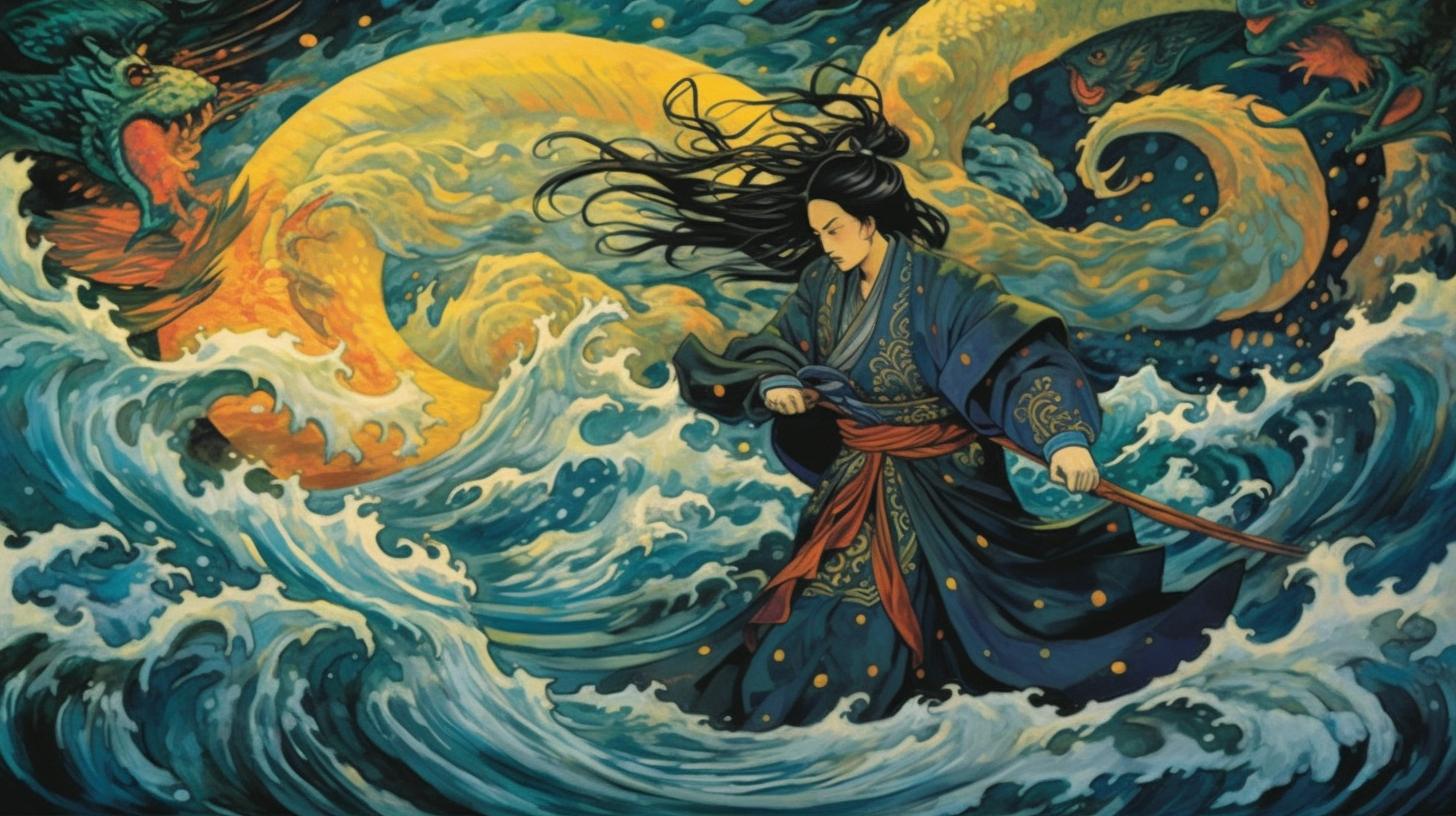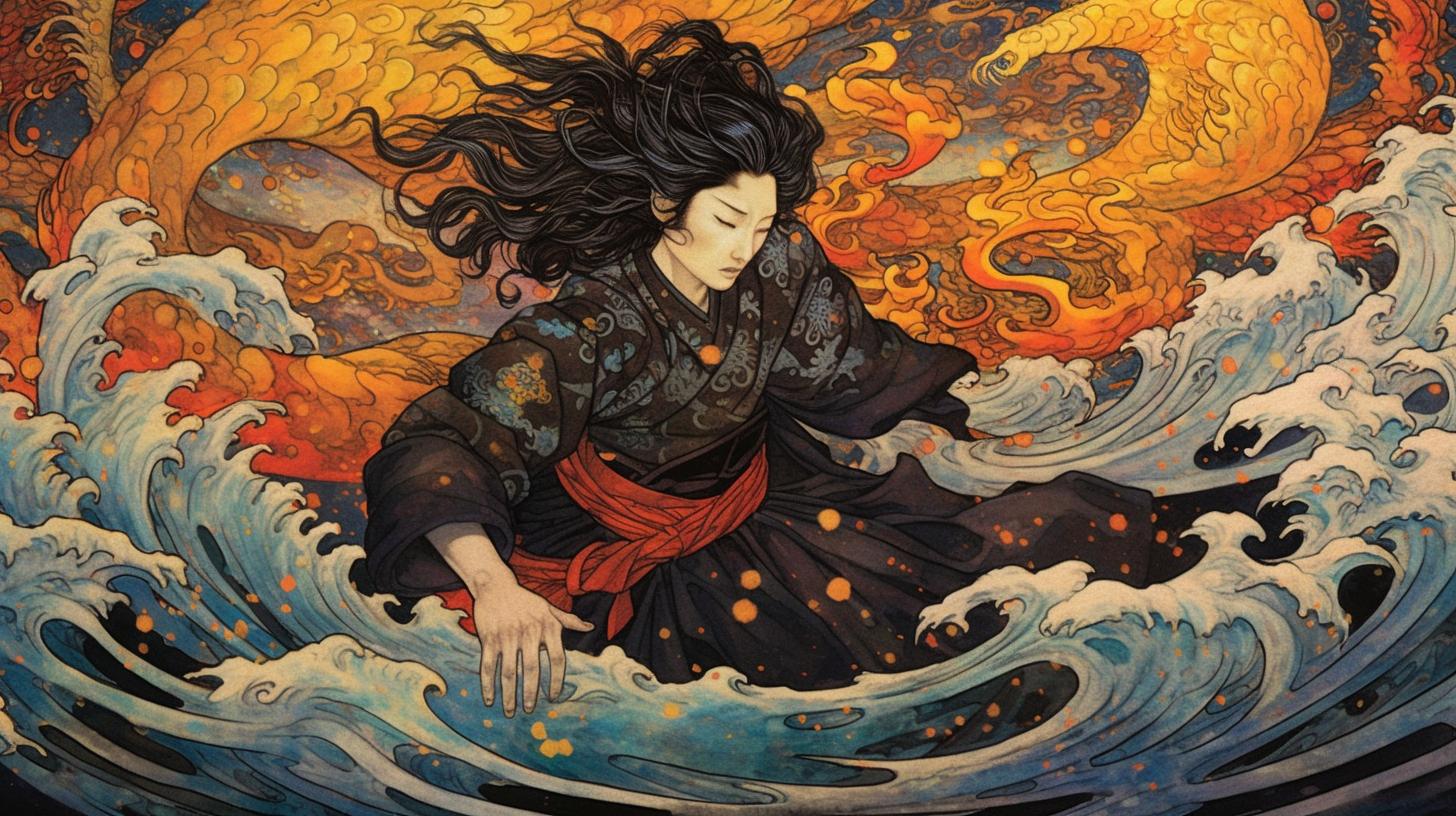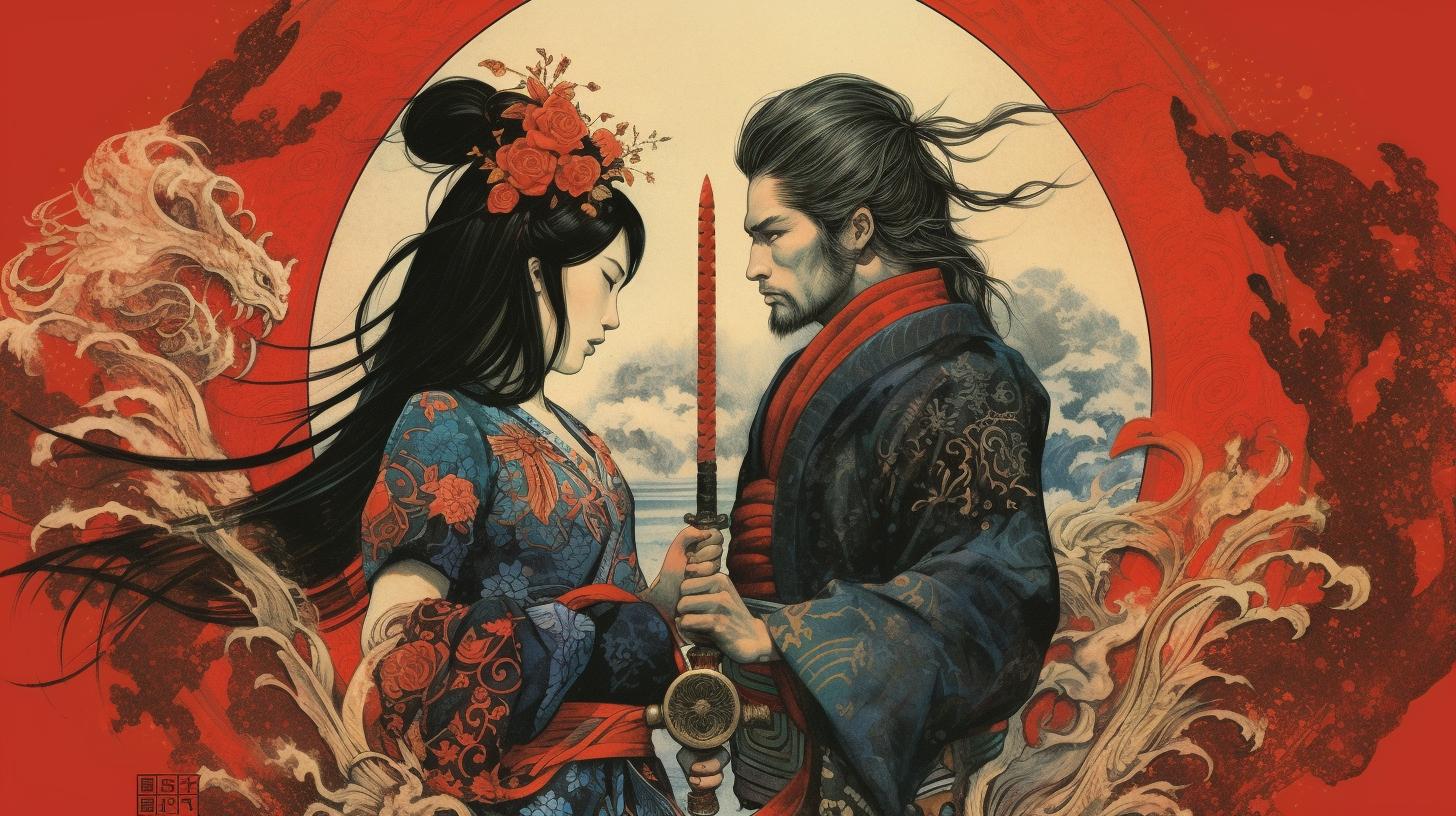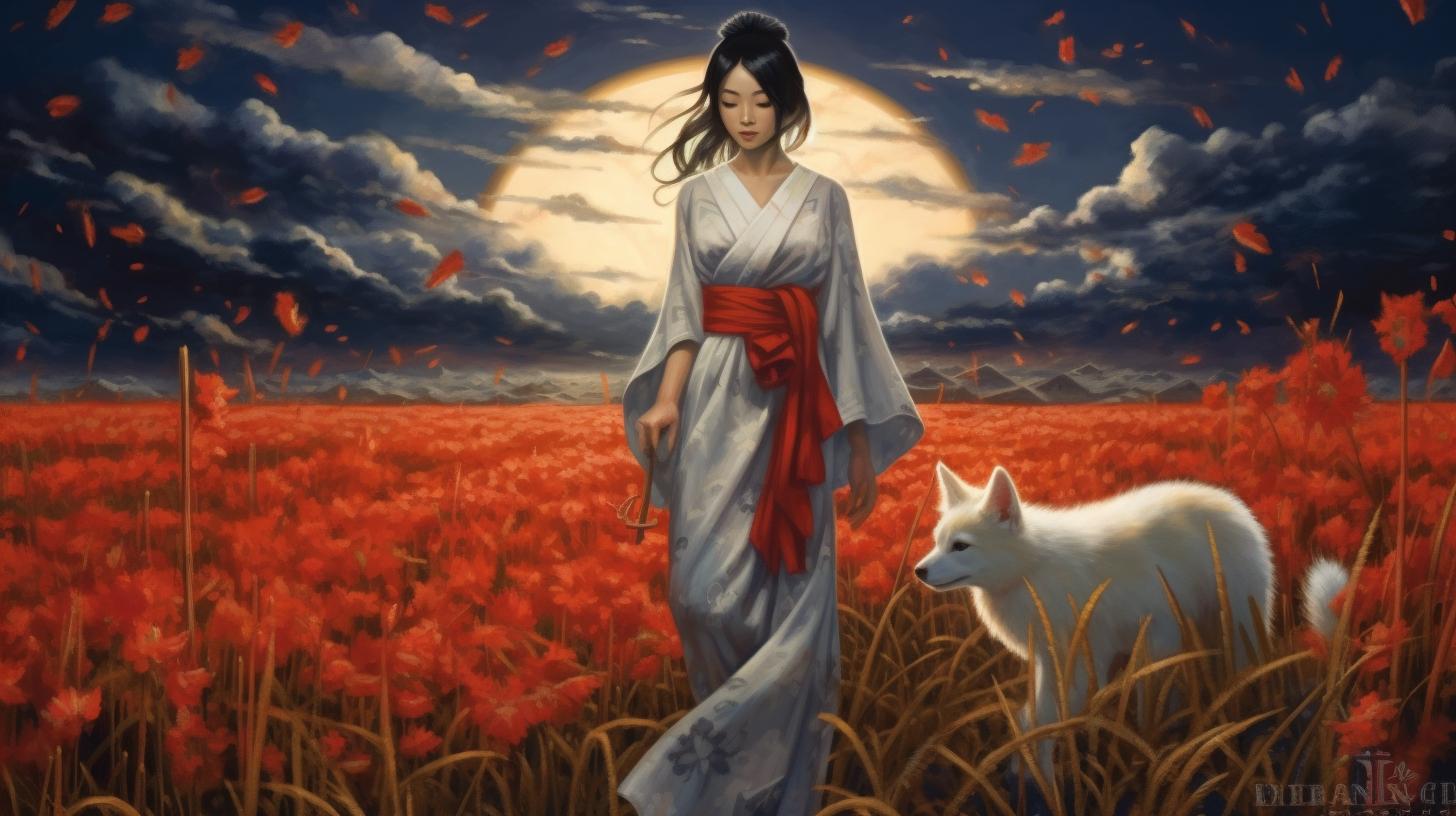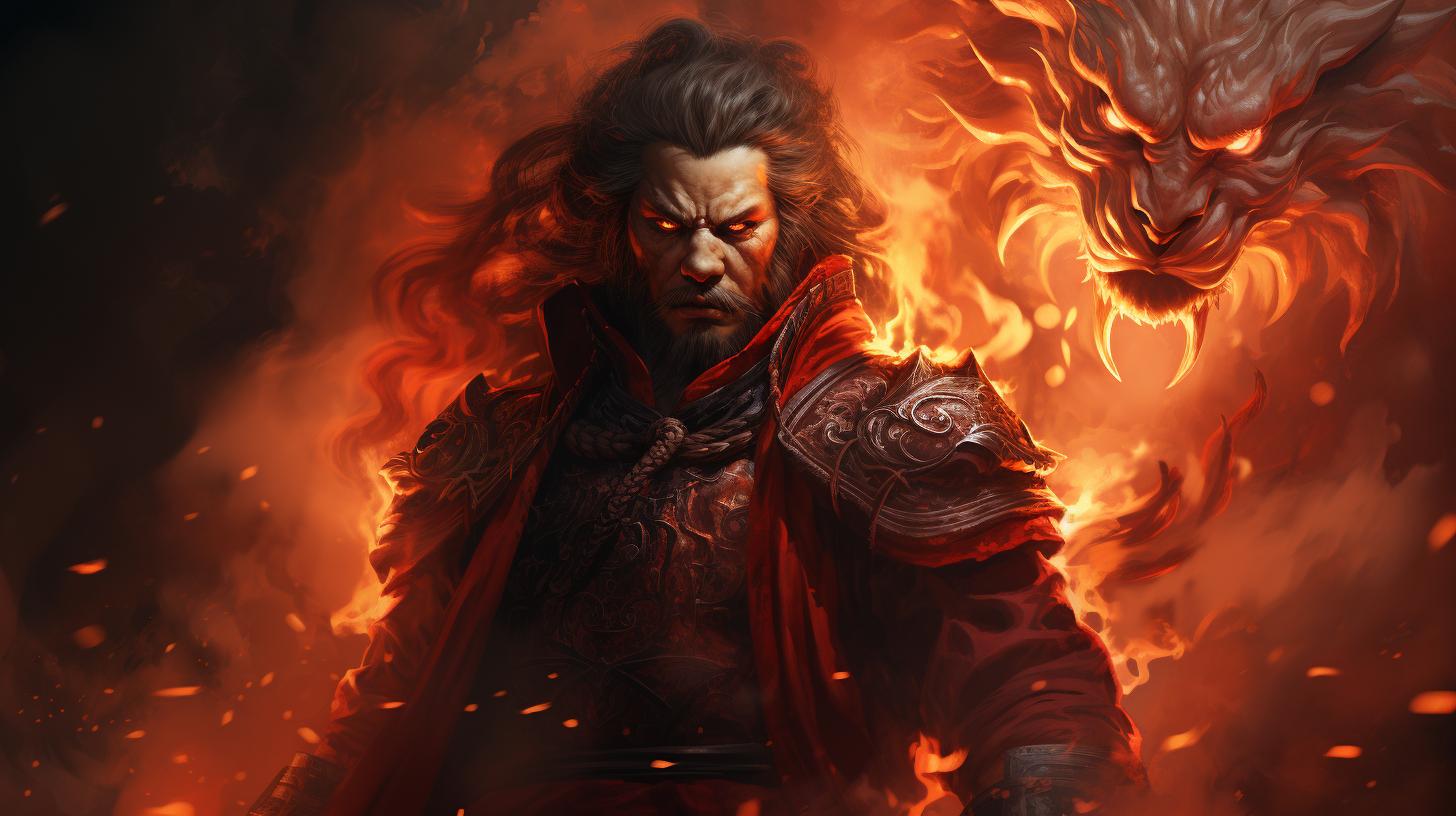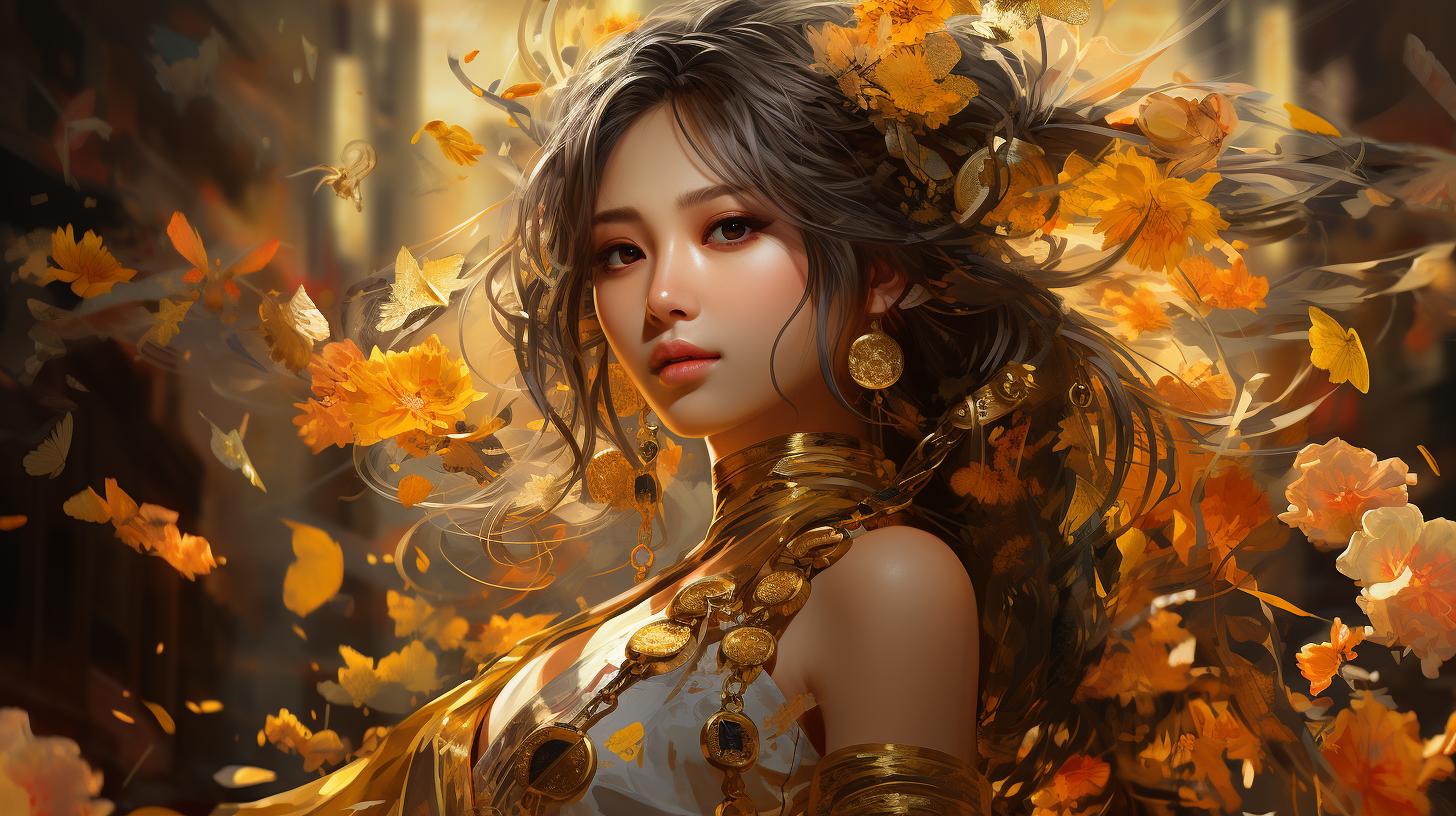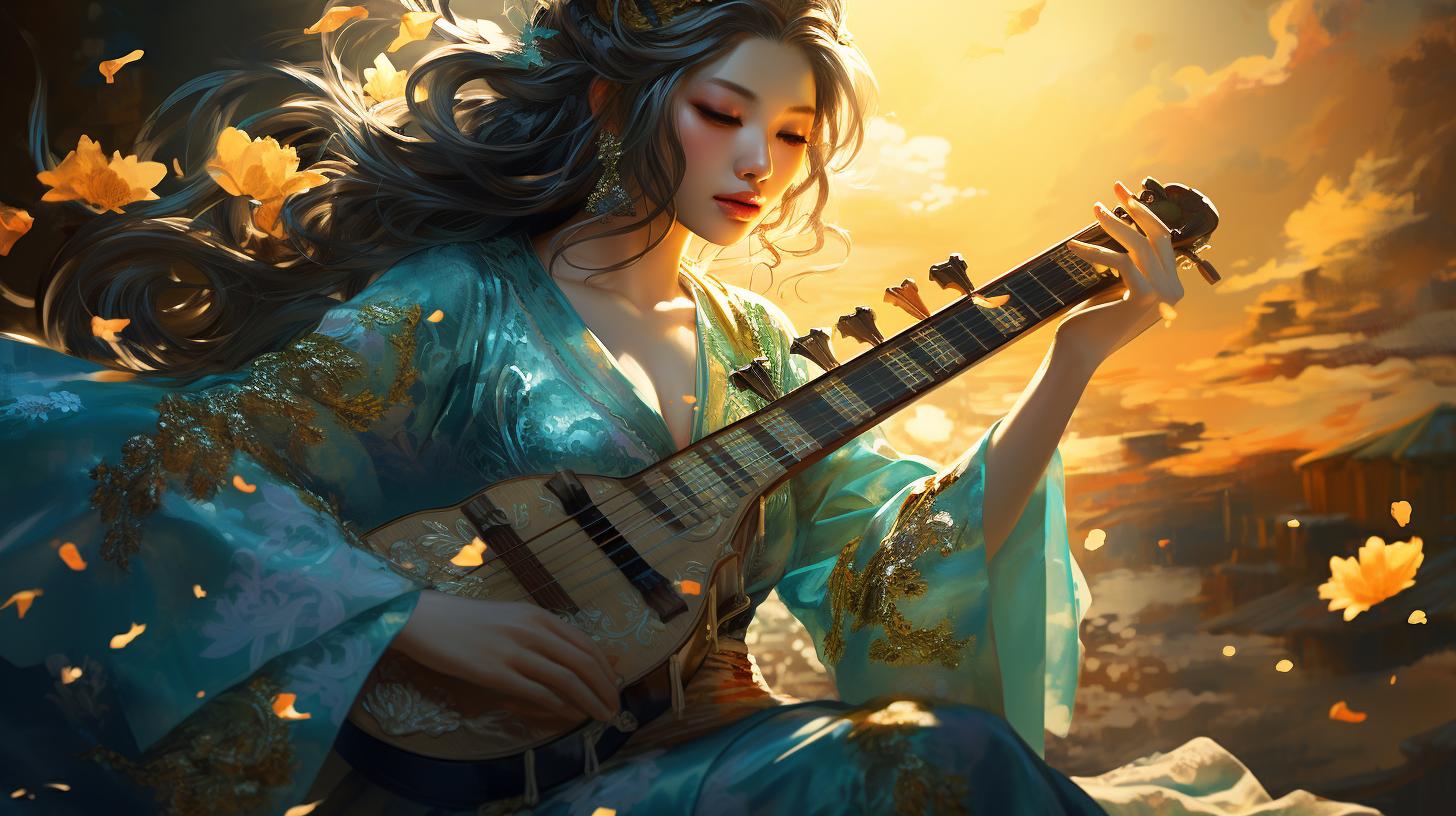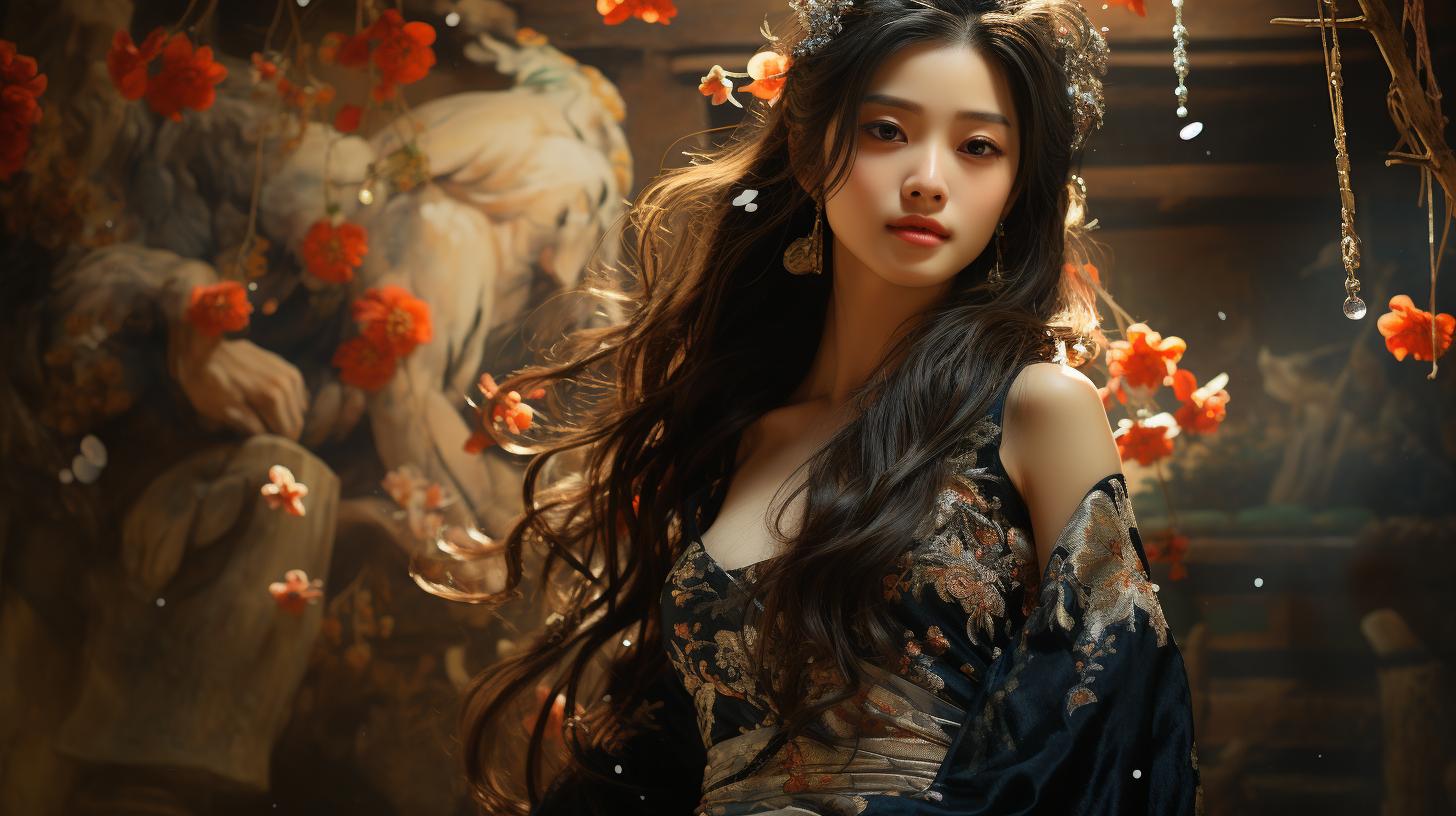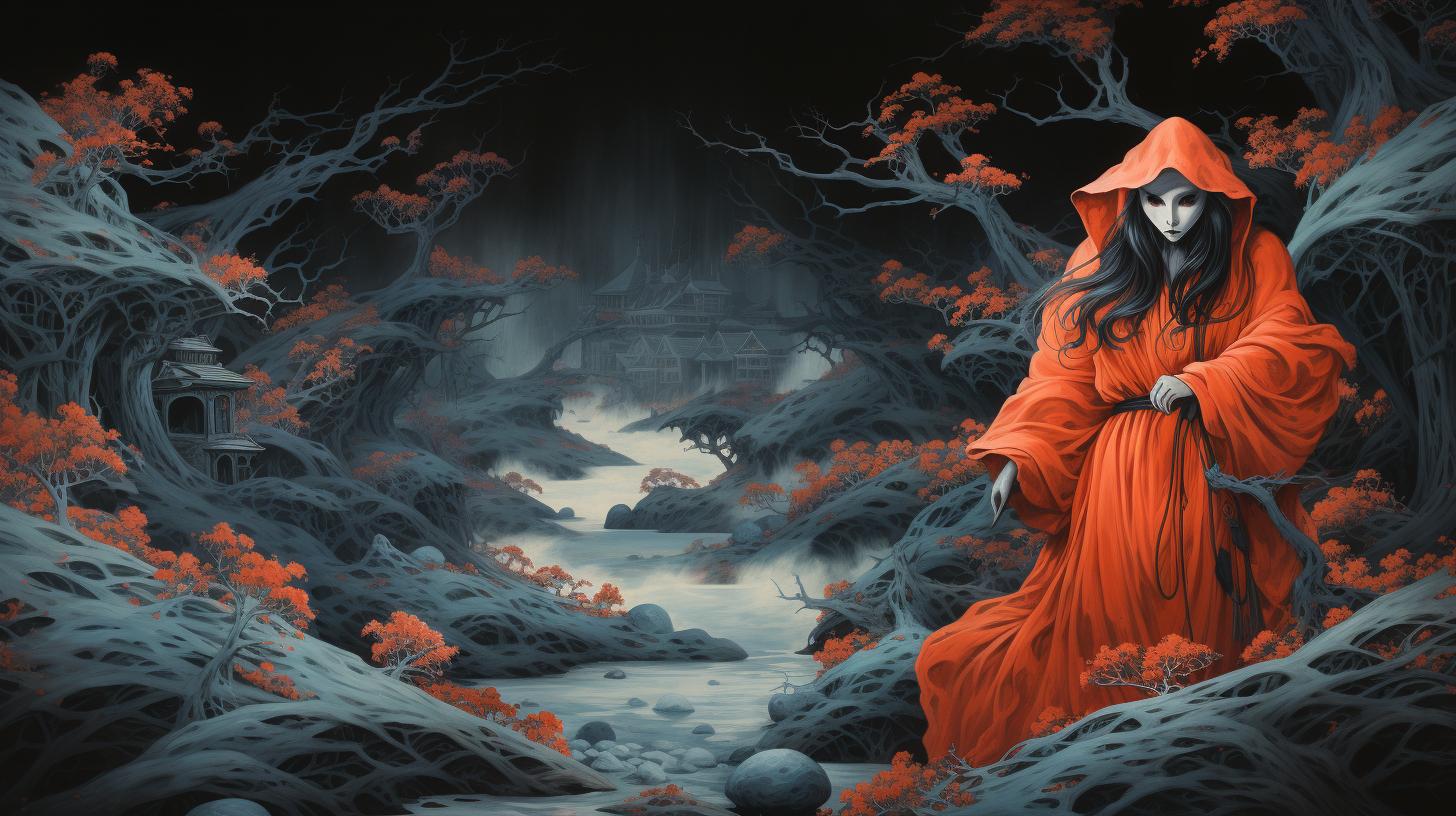God Susano: A Powerful Deity in Japanese Mythology

Susanoo is a deity in Japanese mythology, known for his association with the sea, storms, harvest, and agriculture. He is also linked to deities of pestilence and disease. Susanoo’s chaotic nature has led to his association with destructive moods and actions.
Despite this, he is celebrated in many Shinto myths and is the guardian of the gateway to the Land of the Dead. Susanoo’s legacy can be seen through his impact on Japanese art, literature, and pop culture, making him a significant figure in Japan’s rich cultural history.
Susanoo in Japanese Mythology
Susanoo is a prominent figure in Japanese mythology, known for his associations with the sea, storms, harvest, and agriculture. He is also linked to deities of pestilence and disease.
As the younger brother of Amaterasu, the goddess of the sun, Susanoo’s turbulent nature led to his expulsion from heaven.
In this section, we will explore the mythological stories surrounding Susanoo’s birth, his battle with the dragon Orochi, and his relationships with other deities in Japanese mythology.
The Creation Myth: Susanoo and His Birth
According to Japanese mythology, Susanoo was created when his father, Izanagi, purifies himself after traveling through the underworld. During his purification, he washes his left eye, right eye, nose, mouth, and finally, his left arm.
From each piece of his body, a different deity is born. Susanoo was created from his nose and is thus considered to be an impulsive and uncontrollable deity.
The Legend of Kusanagi-no-Tsurugi: Susanoo and the Dragon Orochi
One of the most well-known stories involving Susanoo is the battle with the dragon Orochi. In the story, the eight-headed dragon terrorizes a small village, demanding sacrifices from the villagers.
At the request of a young woman named Kushinada-hime, Susanoo agrees to slay the dragon in exchange for her hand in marriage.
Susanoo creates sake from rice and lures Orochi into a drunken sleep. He then cuts off each of Orochi’s heads, finding a powerful sword, Kusanagi-no-Tsurugi, in the dragon’s tail.
Susanoo’s Relationship with Other Deities in Japanese Mythology
Susanoo was expelled from heaven due to his chaotic behavior, which included causing destruction and violence. He also frequently clashed with his sister, Amaterasu, causing her to hide in a cave and plunging the world into darkness.
Susanoo is commonly associated with Raijin, the god of thunder, and Fūjin, the god of wind, for their shared associations with storms. He is also linked to deities of pestilence and disease, like Yomi-no-kuni, the underworld of Japanese mythology.
In conclusion, Susanoo is a complex figure in Japanese mythology, known for his turbulent nature and associations with chaos and destruction. The stories of his birth, his defeat of Orochi, and his relationships with other deities offer a glimpse into the importance of this deity within Japanese culture.
The Significance of Susanoo in Japanese Culture
Susanoo is a powerful deity in Japanese mythology, and his significance extends beyond ancient tales and legends. His influence can be seen in many aspects of Japanese culture, both religious and secular.
This section explores the impact of Susanoo on Japanese society and the ways in which he is celebrated and revered.
Susanoo in Shintoism
Susanoo holds a significant role in Shintoism, which is the traditional religion of Japan. Shintoism is a polytheistic religion that venerates a multitude of deities known as kami. Susanoo is one of the most important and revered kami in Shintoism, and he is linked to multiple aspects of nature, including the sea, storms, and agriculture.
In Shinto mythology, it is believed that Susanoo played a vital role in creating the world and the various creatures that inhabit it. He is also seen as a powerful force that protects humanity from evil and malevolent spirits.
Susanoo in Japanese Religious and Cultural Practices
Outside of Shintoism, Susanoo’s influence can be seen in various Japanese religious and cultural practices. For instance, festivals and rituals are held in his honor throughout Japan, especially during harvest season.
One of the most famous of these events is the Aomori Nebuta Festival, which takes place in Aomori Prefecture and involves large, illuminated floats that depict scenes from Shinto mythology, including the story of Susanoo and the eight-headed dragon Orochi.
Additionally, many Japanese martial arts, such as kendo and iaido, pay homage to Susanoo by incorporating the sword Kusanagi-no-Tsurugi, which is said to have been wielded by Susanoo in his battle against Orochi.
Susanoo’s Mythological Impact on Japanese Society
The legend of Susanoo has had a significant impact on Japanese society. Susanoo is often depicted in art and literature, and his story has inspired many works of fiction, including manga and anime.
This influence can also be seen in popular culture, such as in video games, where Susanoo is often portrayed as a powerful and revered figure. In addition, Susanoo’s story has been used as a symbol of perseverance and resilience in the face of adversity, making him an important cultural icon in Japan.
The Legacy of Susanoo in Modern Japan
Susanoo’s influence is still felt in Japan today and can be seen in many aspects of modern Japanese culture. From art and literature to popular culture, Susanoo’s image continues to be an important cultural symbol in contemporary Japan.
The Role of Susanoo in Japanese Art and Literature
Susanoo’s depiction in Japanese art has varied over time, but his impact on visual culture has remained constant. He has been portrayed as a wild, unruly figure, often with exaggerated, moody expressions that convey his chaotic nature.
In literature, Susanoo’s mythological exploits have inspired countless tales, poems, and novels, with his story often serving as a metaphor for the forces of nature and the unpredictable nature of life.
- The Tale of Yamata-no-Orochi is perhaps the most famous example of Susanoo’s role in Japanese literature; it tells the story of how he defeated the dragon Orochi and obtained its sword, Kusanagi-no-Tsurugi.
- Other notable works featuring Susanoo include the Nihon Shoki and Kojiki, two ancient Japanese texts that chronicle the country’s creation myths and legends.
- Susanoo has also been referenced in modern manga and anime, where he often appears as a powerful, godlike figure capable of extreme feats of strength and destruction.
Susanoo’s Impact on Japanese Pop Culture
Susanoo’s influence can also be felt in contemporary Japanese pop culture, where he is often portrayed as a powerful, supernaturally gifted figure. His image has been used in video games, anime, and manga, where he often serves as a mentor, protector, or antagonist.
His image has also been used in marketing campaigns, where he is sometimes depicted as a symbol of high-quality craftsmanship or traditional Japanese culture.
- In popular video games like Final Fantasy and Shin Megami Tensei, Susanoo appears as a powerful character capable of wielding the Kusanagi-no-Tsurugi and other supernatural abilities.
- In anime like Naruto and Noragami, Susanoo appears as an important character whose story and exploits help advance the plot and develop character relationships.
The Ongoing Cultural Relevance of Susanoo in Japan Today
Despite the evolution of Japanese culture and society over the centuries, Susanoo’s mythological legacy continues to hold significance for many Japanese people today. His chaotic nature and unpredictable moods are seen as a reflection of the natural world, which remains a powerful and mysterious force in Japanese culture.
Moreover, his story of overcoming adversity and conquering his demons has become a symbol of personal strength and perseverance in Japanese society.
- Susanoo’s image and legend can be seen in countless monuments, shrines, and other cultural sites throughout Japan, where he is celebrated as an important figure in the country’s spiritual and artistic history.
- Honoring Susanoo remains an important aspect of many traditional festivals and ceremonies in Japan, where his image is often invoked to ward off evil spirits or bring good luck and prosperity.
- In modern Japan, Susanoo continues to inspire creativity and imagination, serving as a powerful symbol of the country’s rich cultural heritage and its enduring connections to the natural world.
.

